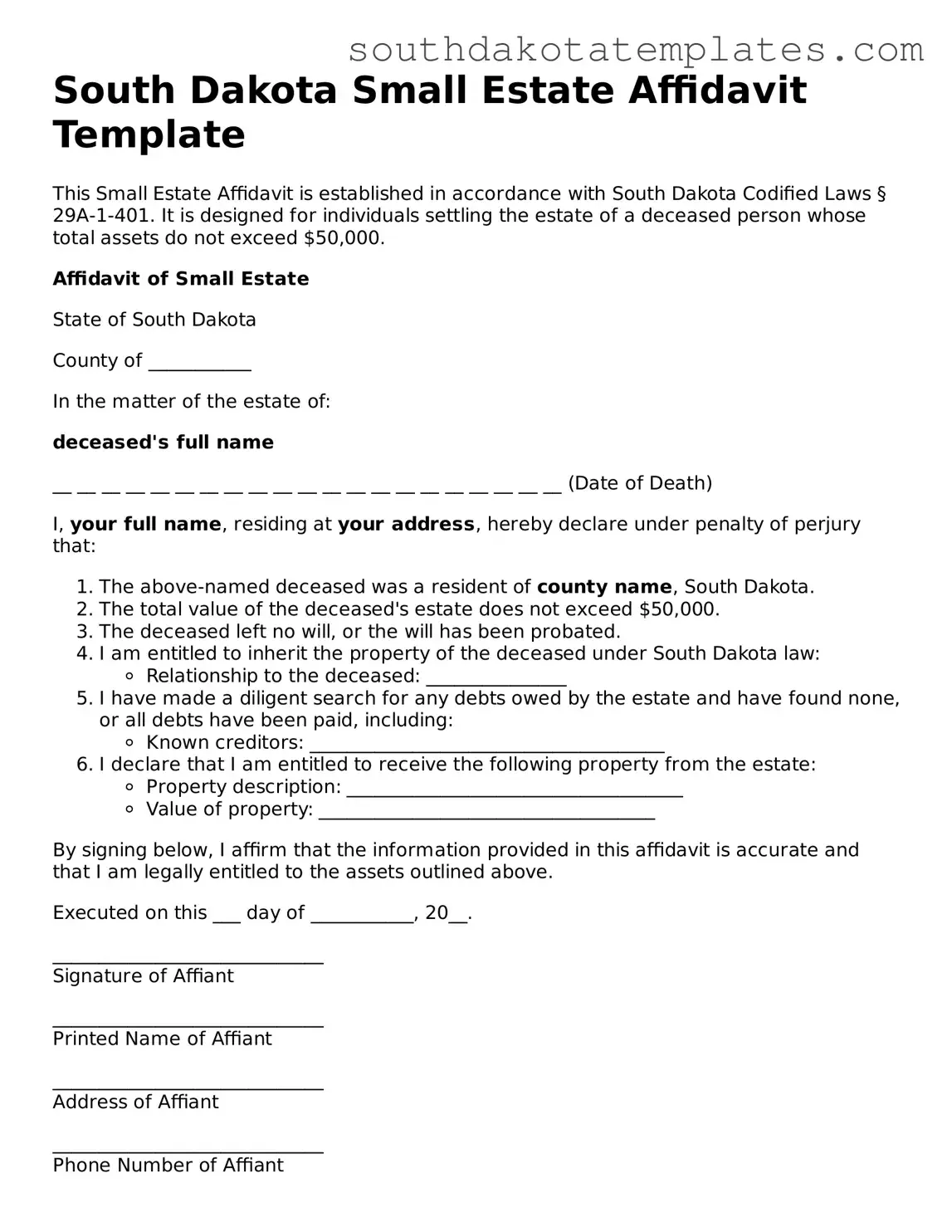Free South Dakota Small Estate Affidavit Document
The South Dakota Small Estate Affidavit is a legal document designed to simplify the process of settling small estates without the need for formal probate proceedings. This form allows heirs or beneficiaries to claim the deceased's assets efficiently, provided the estate meets specific criteria. Understanding how to properly fill out this affidavit is crucial for ensuring a smooth transition of assets.
Ready to take the next step? Fill out the form by clicking the button below.
Get Small Estate Affidavit
